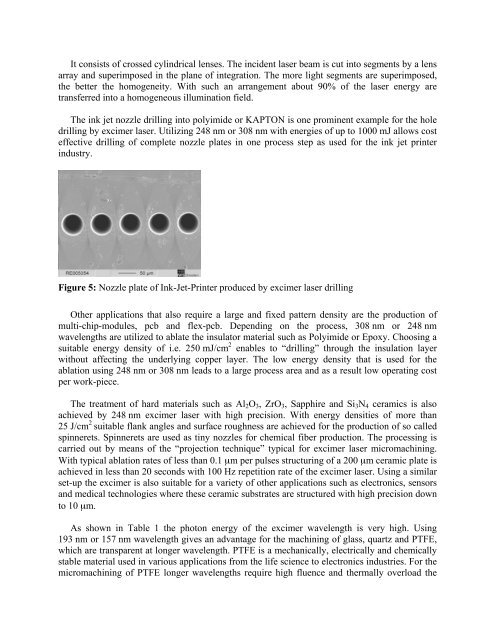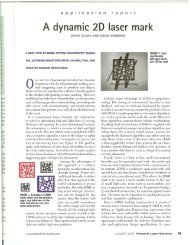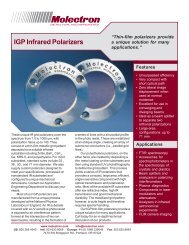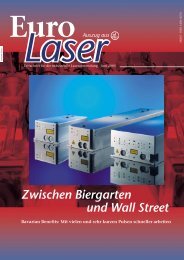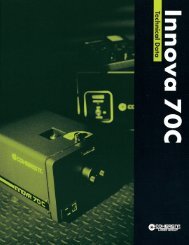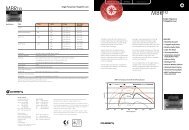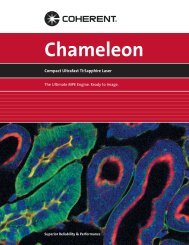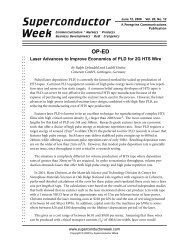Comparison Excimer Laser – Solid State Laser Rainer ... - Coherent
Comparison Excimer Laser – Solid State Laser Rainer ... - Coherent
Comparison Excimer Laser – Solid State Laser Rainer ... - Coherent
You also want an ePaper? Increase the reach of your titles
YUMPU automatically turns print PDFs into web optimized ePapers that Google loves.
It consists of crossed cylindrical lenses. The incident laser beam is cut into segments by a lens<br />
array and superimposed in the plane of integration. The more light segments are superimposed,<br />
the better the homogeneity. With such an arrangement about 90% of the laser energy are<br />
transferred into a homogeneous illumination field.<br />
The ink jet nozzle drilling into polyimide or KAPTON is one prominent example for the hole<br />
drilling by excimer laser. Utilizing 248 nm or 308 nm with energies of up to 1000 mJ allows cost<br />
effective drilling of complete nozzle plates in one process step as used for the ink jet printer<br />
industry.<br />
Figure 5: Nozzle plate of Ink-Jet-Printer produced by excimer laser drilling<br />
Other applications that also require a large and fixed pattern density are the production of<br />
multi-chip-modules, pcb and flex-pcb. Depending on the process, 308 nm or 248 nm<br />
wavelengths are utilized to ablate the insulator material such as Polyimide or Epoxy. Choosing a<br />
suitable energy density of i.e. 250 mJ/cm 2 enables to “drilling” through the insulation layer<br />
without affecting the underlying copper layer. The low energy density that is used for the<br />
ablation using 248 nm or 308 nm leads to a large process area and as a result low operating cost<br />
per work-piece.<br />
The treatment of hard materials such as Al2O3, ZrO3, Sapphire and Si3N4 ceramics is also<br />
achieved by 248 nm excimer laser with high precision. With energy densities of more than<br />
25 J/cm 2 suitable flank angles and surface roughness are achieved for the production of so called<br />
spinnerets. Spinnerets are used as tiny nozzles for chemical fiber production. The processing is<br />
carried out by means of the “projection technique” typical for excimer laser micromachining.<br />
With typical ablation rates of less than 0.1 µm per pulses structuring of a 200 µm ceramic plate is<br />
achieved in less than 20 seconds with 100 Hz repetition rate of the excimer laser. Using a similar<br />
set-up the excimer is also suitable for a variety of other applications such as electronics, sensors<br />
and medical technologies where these ceramic substrates are structured with high precision down<br />
to 10 µm.<br />
As shown in Table 1 the photon energy of the excimer wavelength is very high. Using<br />
193 nm or 157 nm wavelength gives an advantage for the machining of glass, quartz and PTFE,<br />
which are transparent at longer wavelength. PTFE is a mechanically, electrically and chemically<br />
stable material used in various applications from the life science to electronics industries. For the<br />
micromachining of PTFE longer wavelengths require high fluence and thermally overload the


